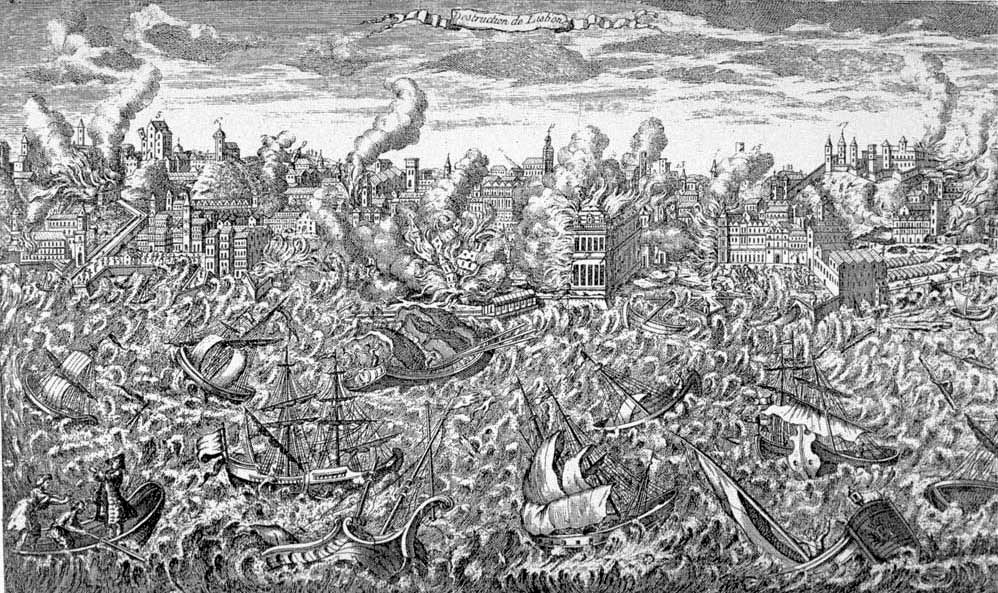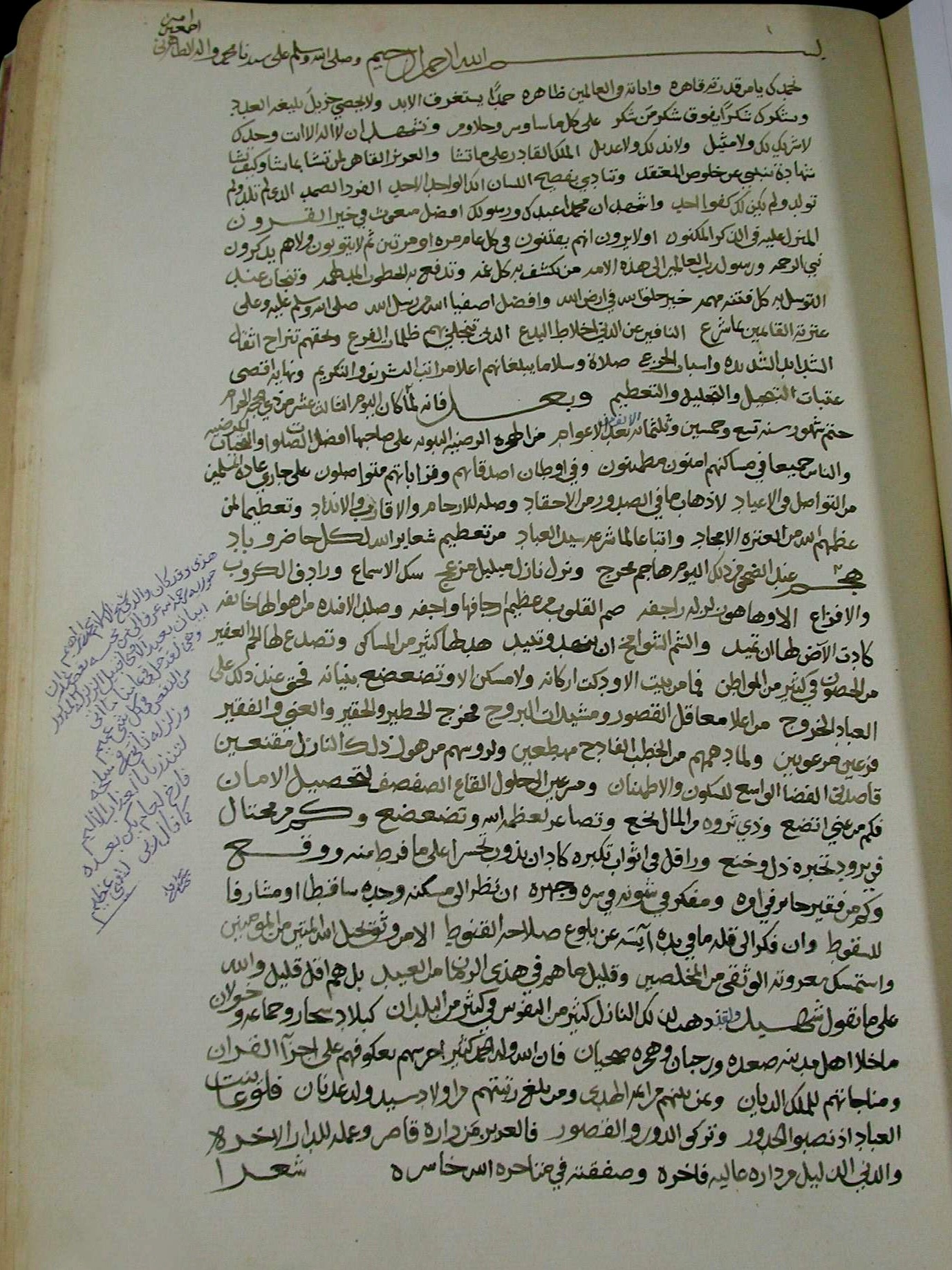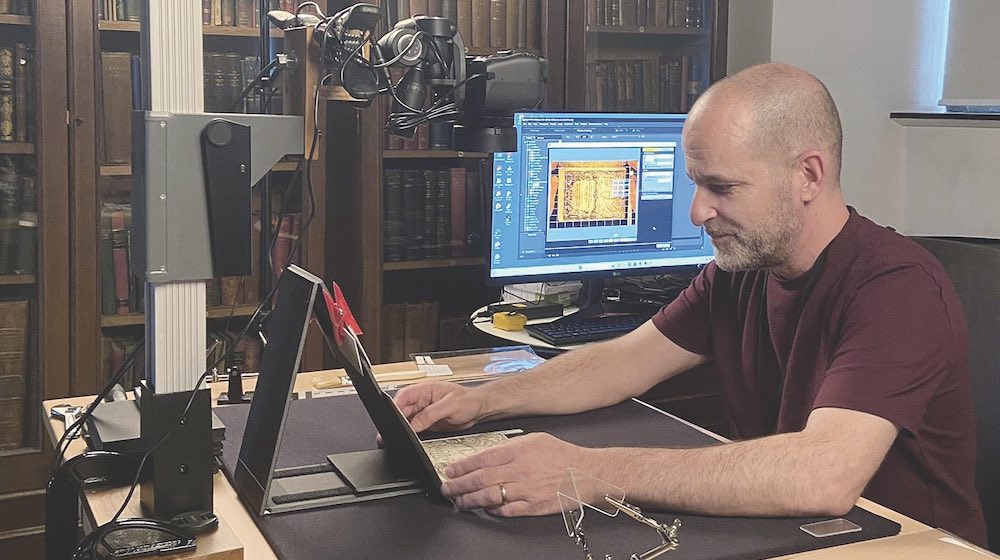Remembering An Earthquake
Remembering an Earthquake
March 28, 2024This story is part of an ongoing series of editorials in which HMML curators and catalogers examine how specific themes appear across HMML’s digital collections. From the Islamic collection, Dr. Josh Mugler has this story about Weather.
Many of the regions where HMML has worked are no stranger to earthquakes. The catastrophic earthquakes that struck Turkey and Syria in 2023 killed tens of thousands of people, including Imad Daher, a priest who had worked closely with HMML on projects in Aleppo, Syria. Over the centuries, numerous scholars have attempted to make sense of earthquakes from various cultural, scientific, and theological perspectives, and HMML’s collections include treatises and homilies on earthquakes, written in Arabic, Church Slavonic, and Ottoman Turkish by both Muslim and Christian authors.

Accounts of earthquake events found in HMML’s manuscript collections—ranging from short notes to detailed descriptions—testify to the occurrence of earthquakes across Europe, Africa, and the Middle East, from the 5th century CE to the 20th. One of the lengthier accounts appears in ELIT ESS 03799, a manuscript in the collection of the Imam Essayouti library in Timbuktu, Mali. In this manuscript, an otherwise unknown author named Aḥmad al-Māsinī provides a firsthand West African account of the 1755 CE earthquake that devastated Lisbon and reshaped the thought of many European philosophers.

The most elaborate earthquake account in our collections, however, is found in the opening pages of ZMT 01291, held at the Hāshimī family library in Ṣaʻdah, Yemen. The main text in the manuscript is a treatise addressing theological and legal issues, written by a 19th-century author and copied in 1931 CE. About 10 years later, someone added the description of a recent earthquake to one of the manuscript’s front flyleaves.
There is no way to be sure who authored this earthquake account. A note on the title page indicates that almost immediately after it was copied in 1931, the manuscript came into the possession of Ismāʻīl ibn ʻAbd Allāh al-Hāshimī (d. 1942 or 1943 CE), a local scholar of Ṣaʻdah and a member of the Hāshimī family that still owns the book. Ismāʻīl may have been the author of the earthquake account and written it into his own book, or the copyist and/or author may be someone else entirely. No other copy of this short text is known.

The text describes an earthquake that struck Ṣaʻdah and surrounding villages in the northern Yemeni highlands on January 11, 1941 CE. Numerous villages were destroyed and approximately 1,200 people died, primarily Zaydī Muslims and their Jewish neighbors.
The description in ZMT 01291 describes the event and tries to make sense of it in Islamic terms. Notably, the entire text is written in the ornate style known in Arabic as sajʻ, a form of rhythmic, rhymed language that has long been considered the pinnacle of literary style in Arabic prose. This indicates, without a doubt, that the author was highly educated and devoted considerable time and effort to the composition of this two-page text. I will attempt to give some sense of the sajʻ rhythm and rhyme in the translated passages that follow.
The text opens with the invocation of God and the Prophet:
“We praise you whose power is victorious, whose signs throughout the worlds are notorious, with praise that fills eternity, and number cannot encompass the abundance of its profundity.”
After the ornate introductory paragraph, the author proceeds to the description of the disaster.
The date of this earthquake corresponds to the 13th of Dhū al-Ḥijjah on the Islamic calendar, which means it took place on the fourth day of the celebration of Eid al-Adha. This holiday is one of the most significant annual festivals for Muslims and commemorates the prophet Abraham’s willingness to sacrifice his son, as described in the book of Genesis and in the Qurʼan. The author of the earthquake account sets the stage:
“While all the people were in their homes in peace and tranquility, and in the hometowns of their friends and relatives enjoying hospitality, gathering for festivals according to Muslim tradition, to chase from their hearts all malicious intention, by connecting with kith and kin and relation…in the morning of that day they were attacked by an attacker most disconcerting, and an assailant assailed that was confusing and disturbing. Deaf went all ears, and there followed only grief and fears, for behold it was an earthquake shaking, stopping hearts by the greatness of its agitated quaking, and stilling spirits by its terrors dismaying.”
The author continues along these lines, painting a vivid picture of the chaos and terror caused by the disaster that struck in the middle of the community’s joyful celebrations. The text emphasizes that the earthquake occurred across a large region of northern Yemen and devastated the entire community, both rich and poor. For many people, the event brought to mind the disasters to come at the end of times and provoked pious reflection on the state of the world.
The text describes how the community gathered to hear the reflections of a select group of scholars—perhaps including the author of the account—who attempted to make sense of the catastrophe from a theological perspective. At this point the larger context of the time becomes evident, as the scholars encourage their audience not to imitate “the Christians and their like,” (meaning primarily European and American imperial powers) who build “weapons of war…and airplanes that soar.” Clearly the people of northern Yemen were quite aware that World War II was well underway, not to mention the ongoing British encroachment on southern Yemen and other nearby regions. By carefully crafting this elegant description of the disaster, the author of this text hoped to ensure that the 1941 earthquake and the experiences of the community that lived through it would not be forgotten.




